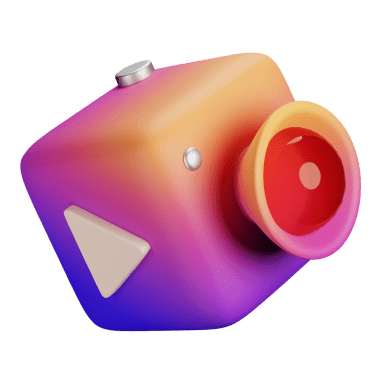“`html
Introduction to Content Marketing
Content marketing is a strategic approach focused on creating and distributing valuable, relevant, and consistent content to attract and retain a clearly defined audience. Unlike traditional marketing, which often disrupts consumers with direct advertisements, content marketing aims to offer useful information that naturally aligns with the interests of potential customers. This shift from traditional marketing to digital content strategies marks a significant change in how businesses engage with their audience.
In today’s digital age, consumers are inundated with advertisements from various channels, making it increasingly challenging for businesses to capture attention. Content marketing addresses this challenge by offering content that educates, entertains, or solves problems for the audience. By doing so, businesses can build trust and establish authority in their industry. The essence of content marketing lies in its ability to create a meaningful connection with the audience, ultimately driving profitable customer action.
The importance of content marketing cannot be overstated. It plays a crucial role in search engine optimization (SEO), enhancing online visibility, and driving organic traffic to a business’s website. High-quality content can also be shared across social media platforms, amplifying reach and engagement. Furthermore, content marketing supports lead generation and nurturing efforts, as well-crafted content can guide potential customers through the buyer’s journey, from awareness to decision-making.
As businesses continue to navigate the complexities of the digital landscape, content marketing emerges as an essential strategy for growth. By prioritizing the creation of valuable and relevant content, businesses can not only attract new customers but also retain existing ones, fostering long-term loyalty. In summary, content marketing is a powerful tool that, when executed effectively, can significantly contribute to a business’s overall success.
The Role of Content Marketing in Business Development
Content marketing plays a pivotal role in business development by directly contributing to growth through various strategic avenues. One of the primary benefits is building brand awareness. By consistently producing high-quality and relevant content, companies can reach a wider audience and position themselves as industry leaders. This increased visibility helps potential customers become familiar with the brand, making it more likely that they will choose its products or services over competitors.
Establishing authority and trust is another critical aspect of content marketing. When businesses provide valuable information and insights through blogs, articles, videos, and other mediums, they demonstrate expertise in their field. This not only educates the audience but also builds credibility, making potential customers more likely to trust the brand. Trust is an essential factor in the decision-making process, and content marketing can significantly influence this by offering reliable and authoritative information.
Driving conversions is an immediate and tangible benefit of content marketing. By creating targeted and engaging content, businesses can guide potential customers through the sales funnel. Effective content addresses the audience’s pain points and offers solutions, encouraging them to take action, whether it’s signing up for a newsletter, downloading a whitepaper, or making a purchase. Well-crafted calls to action within the content can significantly boost conversion rates.
The long-term benefits of content marketing extend beyond immediate growth. Consistent, high-quality content fosters customer loyalty by keeping the audience engaged and informed. Regular updates and valuable insights keep customers coming back, enhancing sustained engagement. Over time, this loyal customer base can become advocates for the brand, further amplifying its reach and impact.
In essence, content marketing is a multifaceted tool that not only drives immediate growth through increased visibility and conversions but also contributes to long-term business development by building a trustworthy, authoritative, and engaging brand presence.
Creating a Content Marketing Strategy
Developing an effective content marketing strategy is pivotal for driving business growth. The initial step involves identifying your target audiences. Understanding who your potential customers are allows you to tailor content that resonates with their needs and preferences. Conducting thorough market research and creating detailed buyer personas can provide valuable insights into the demographics, interests, and behaviors of your audience.
Once the target audience is clearly defined, the next step is to set SMART goals—goals that are Specific, Measurable, Achievable, Relevant, and Time-bound. These objectives guide your content marketing efforts and provide a benchmark to measure success. For instance, increasing website traffic by 20% in six months or generating 50 qualified leads per month are examples of SMART goals that can drive focused and result-oriented content creation.
Choosing the right content formats is another crucial aspect of a robust content marketing strategy. Different formats such as blog posts, videos, infographics, podcasts, and eBooks cater to varied audience preferences and engagement levels. It’s essential to diversify content types while ensuring consistency in quality and messaging. This variety not only keeps the audience engaged but also enhances the reach and impact of your content.
Planning a content calendar is essential for maintaining a steady flow of content. A well-organized content calendar helps in managing content creation and publication schedules, ensuring timely and consistent delivery. It also allows for strategic planning around key dates, events, and marketing campaigns, aligning content efforts with broader business objectives.
Aligning content marketing efforts with overall business goals ensures that each piece of content contributes to the larger vision of the company. Regularly reviewing and adjusting the strategy based on performance metrics and market trends is vital for sustained growth. By embedding content marketing into the core business strategy, companies can effectively engage their audience, build brand authority, and drive significant business growth.
Types of Content for Business Growth
Content marketing encompasses a broad spectrum of content types, each serving unique purposes and offering distinct advantages. Understanding the various types of content available and strategically selecting the right mix can significantly drive business growth.
Blog Posts: Blog posts are a cornerstone of content marketing. They offer a platform for businesses to share in-depth knowledge, establish authority in their industry, and improve search engine rankings through well-researched and keyword-optimized articles. Consistently publishing high-quality blog posts can attract and engage a target audience, fostering trust and loyalty.
Videos: Video content is increasingly popular due to its engaging nature and high shareability. Videos can effectively convey complex information in a digestible format, making them an ideal medium for product demonstrations, tutorials, and customer testimonials. The visual and auditory elements of videos also help in capturing the audience’s attention and enhancing recall.
Infographics: Infographics combine visuals and text to present information concisely and attractively. They are particularly effective for presenting statistics, processes, and comparisons, making complex data more accessible and understandable. Infographics are highly shareable on social media, contributing to increased brand visibility.
Podcasts: Podcasts offer a unique way to reach audiences who prefer audio content. They are convenient for listeners who can consume content while multitasking. Podcasts can cover various topics, including industry insights, expert interviews, and company news, allowing businesses to connect with their audience on a personal level.
Social Media Posts: Social media platforms are essential for promoting content and engaging with the audience in real time. Social media posts can include a mix of text, images, videos, and live streams, providing opportunities for businesses to interact with their audience, gather feedback, and build a community. The immediate nature of social media allows for timely updates and promotions.
Choosing the right mix of content types depends on the target audience’s preferences and the business’s goals. By leveraging a variety of content, businesses can cater to different consumption habits and enhance their content marketing strategy, ultimately driving growth and success.
“`html
Content Distribution Channels
Effectively distributing content is crucial to leveraging content marketing for business growth. Various channels can be utilized to maximize reach and impact, including owned, earned, and paid media. Each of these channels offers unique advantages and can be strategically employed to enhance content visibility and engagement.
Owned media refers to channels that a business directly controls, such as its website, blog, and email newsletters. These platforms provide a space to publish original content tailored to the target audience, ensuring consistency in messaging and brand voice. Regularly updating a blog with high-quality content and sending out informative email newsletters can help maintain audience engagement and foster a loyal customer base.
Earned media includes publicity gained through efforts other than paid advertising, such as guest posts, public relations, and mentions on social media. Leveraging relationships with industry influencers and media outlets can significantly amplify a brand’s reach. Guest posting on reputable websites can establish a business as a thought leader, while positive PR can enhance brand credibility. Social media platforms further offer opportunities for organic sharing and engagement, expanding the content’s reach through user-generated amplification.
Paid media encompasses various forms of paid advertising, including social media ads, pay-per-click (PPC) campaigns, and sponsored content. These methods can offer immediate visibility and drive targeted traffic to a business’s site. Social media ads allow for precise audience targeting based on demographics and interests, while PPC campaigns ensure that content appears in relevant search results, increasing the chances of reaching potential customers actively seeking related information.
The importance of SEO and social media optimization cannot be overstated in content distribution. Implementing SEO best practices ensures that content ranks higher in search engine results, making it more discoverable. This includes optimizing keywords, meta descriptions, and internal linking structures. Similarly, optimizing content for social media by using relevant hashtags, engaging visuals, and compelling headlines can enhance shareability and drive more traffic to owned media platforms.
In sum, a strategic approach to utilizing owned, earned, and paid media, supported by robust SEO and social media optimization efforts, can significantly enhance the reach and impact of content marketing initiatives, driving business growth and success.
Measuring Content Marketing Success
Effective content marketing hinges on the ability to measure its success accurately. Key performance indicators (KPIs) and metrics are essential tools in this evaluation process. They provide insights into how well content is performing, guiding businesses to make informed decisions. To track these metrics, businesses can leverage various tools, such as Google Analytics, social media insights, and customer relationship management (CRM) systems.
Google Analytics is a powerful tool for monitoring website traffic and user behavior. By analyzing metrics such as page views, bounce rates, and session durations, businesses can gauge the effectiveness of their content. For instance, a high bounce rate might indicate that the content is not engaging enough or that it does not meet the audience’s expectations. Conversely, a low bounce rate coupled with longer session durations suggests that the content is resonating well with visitors, encouraging them to explore more.
Social media insights offer another layer of valuable data. Platforms like Facebook, Twitter, and LinkedIn provide detailed analytics on post engagement, including likes, shares, comments, and reach. These metrics help businesses understand how their content is being received by their audience and how far it is spreading. High engagement rates are indicative of content that fosters discussion and interaction, which is crucial for building a loyal audience.
CRM systems, such as HubSpot or Salesforce, can track how content influences customer behavior and sales. By linking content interactions to customer data, businesses can identify which pieces of content are driving conversions and nurturing leads through the sales funnel. This holistic view allows for a more comprehensive analysis of content marketing success.
Adjusting strategies based on data-driven insights is vital for continuous improvement. By regularly reviewing these KPIs and metrics, businesses can identify trends and make necessary adjustments to their content marketing strategies. Whether it’s tweaking the content format, frequency, or distribution channels, data-driven decisions ensure that content marketing efforts remain aligned with business goals and audience preferences.
“`html
Case Studies of Successful Content Marketing Campaigns
Businesses across various industries have harnessed the power of content marketing to drive substantial growth. By examining these successful campaigns, we gain actionable insights into the strategies, content types, and results that can inspire and inform our own efforts.
One exemplary case is that of Red Bull. Red Bull has adeptly positioned itself not merely as an energy drink company but as a powerhouse of extreme sports and adventure content. By producing high-quality videos, articles, and social media posts centered around extreme sports, Red Bull has created a lifestyle brand. This approach not only engages their target audience but also fosters a loyal community. Their content strategy has led to increased brand awareness, higher engagement rates, and ultimately, a significant boost in sales.
Another notable example is HubSpot, a company that specializes in inbound marketing and sales software. HubSpot’s content marketing strategy focuses on providing valuable educational resources such as blogs, eBooks, webinars, and tutorials. By addressing the pain points of their target audience and offering solutions, HubSpot has established itself as a thought leader in the marketing industry. This inbound approach has resulted in a substantial increase in website traffic, lead generation, and customer acquisition.
GoPro also stands out with its user-generated content strategy. By encouraging customers to share their adventures and experiences using GoPro cameras, the company has built a vast library of authentic, relatable content. This strategy not only showcases the versatility of their products but also fosters a strong sense of community. The authentic nature of user-generated content has led to high levels of engagement and trust, significantly boosting GoPro’s brand loyalty and sales.
These case studies underscore the effectiveness of tailored content marketing strategies. By focusing on high-quality, relevant content that resonates with their audience, these businesses have achieved remarkable growth. Their successes serve as a valuable guide for any organization looking to leverage content marketing for business growth.
As the landscape of content marketing continues to evolve, several emerging trends and innovations are poised to reshape how businesses engage with their audiences. One prominent trend is the rise of interactive content. This form of content, which includes quizzes, polls, and interactive infographics, engages users more deeply than traditional static content. Interactive content not only enhances user experience but also provides valuable insights into customer preferences and behaviors, which can be leveraged to refine marketing strategies.
Personalization is another critical trend gaining momentum in the content marketing arena. With the advent of advanced data analytics and artificial intelligence (AI), businesses can now deliver highly personalized content tailored to the individual preferences and behaviors of their audience. Personalized content fosters stronger customer relationships and improves engagement rates, as it resonates more effectively with the target audience. AI-driven tools can help marketers analyze vast amounts of data to predict trends, automate content creation, and optimize content distribution, making personalization more accessible and efficient.
The increasing use of video and live streaming is also transforming content marketing strategies. Videos have become a dominant form of content consumption, with live streaming providing an authentic, real-time connection between businesses and their audiences. Platforms like YouTube, Facebook Live, and Instagram Live offer businesses opportunities to showcase their products, share behind-the-scenes content, and interact with viewers in real-time. This direct engagement builds trust and loyalty, while also providing immediate feedback that can inform future content initiatives.
To stay ahead of the curve, businesses should continuously evolve their content marketing strategies by integrating these trends. Leveraging interactive content, personalization, and video can significantly enhance engagement and drive business growth. It is crucial for marketers to stay informed about technological advancements and consumer behavior shifts to adapt their approaches accordingly. By embracing these innovations, businesses can create a more dynamic and impactful content marketing strategy that resonates with their audience and fosters long-term success.









